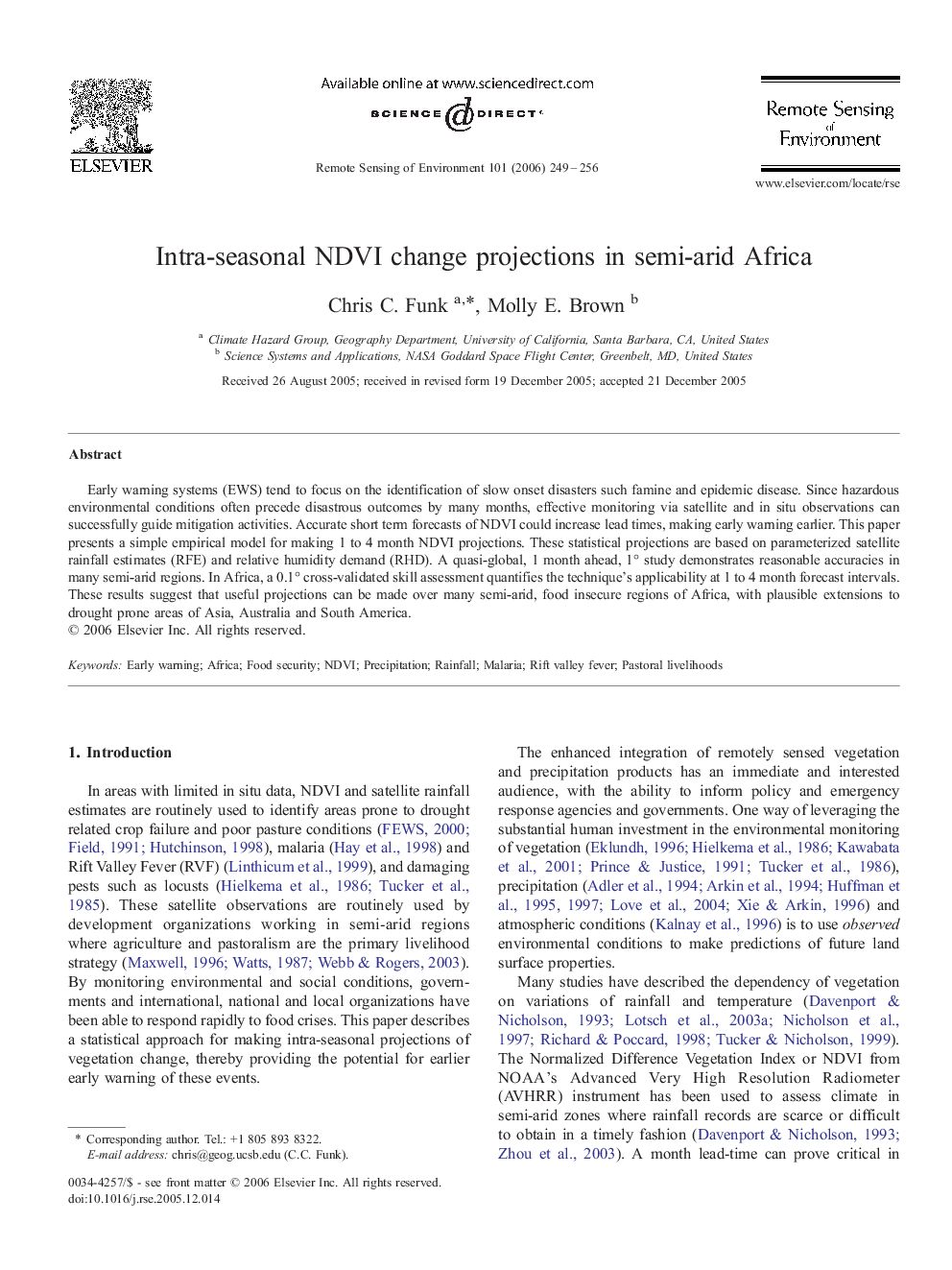| Article ID | Journal | Published Year | Pages | File Type |
|---|---|---|---|---|
| 4461141 | Remote Sensing of Environment | 2006 | 8 Pages |
Early warning systems (EWS) tend to focus on the identification of slow onset disasters such famine and epidemic disease. Since hazardous environmental conditions often precede disastrous outcomes by many months, effective monitoring via satellite and in situ observations can successfully guide mitigation activities. Accurate short term forecasts of NDVI could increase lead times, making early warning earlier. This paper presents a simple empirical model for making 1 to 4 month NDVI projections. These statistical projections are based on parameterized satellite rainfall estimates (RFE) and relative humidity demand (RHD). A quasi-global, 1 month ahead, 1° study demonstrates reasonable accuracies in many semi-arid regions. In Africa, a 0.1° cross-validated skill assessment quantifies the technique's applicability at 1 to 4 month forecast intervals. These results suggest that useful projections can be made over many semi-arid, food insecure regions of Africa, with plausible extensions to drought prone areas of Asia, Australia and South America.
